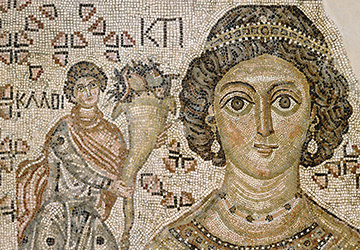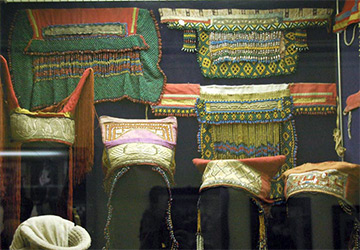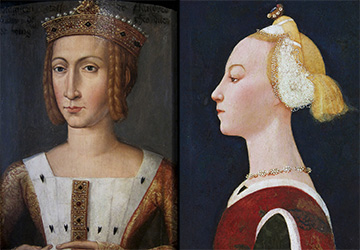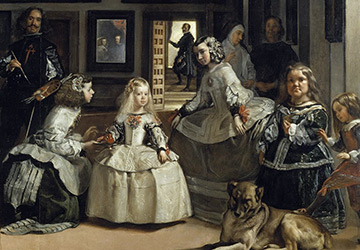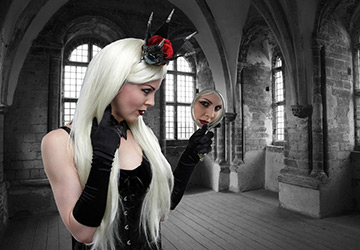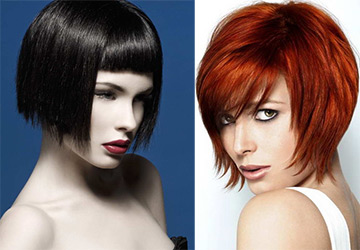Fashion history
Hairstyles and headdresses of Moscow Russia
The hairstyles and headdresses of the Moscow principality changed little and retained their basic forms from the time of the founding of Moscow until the coming to power of Peter I, who, as you know, not only moved the capital from Moscow to St. Petersburg, but also shaved the boyars' beards.
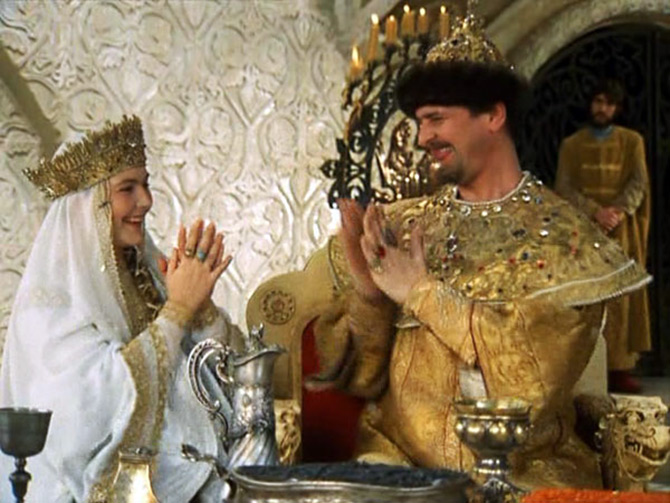
A still from the film "Ivan Vasilyevich Changes His Profession".
Headdresses of the king and queen.
So, men's hairstyles have practically not changed since the times of Kievan Rus - these were short hairstyles, for example, "under the pot". The haircut "under the pot" got its name from the usual clay pot, which was worn on the head during the haircut and the hair was cut along the length of which. A little later, haircuts appear "under a bracket", "in a circle".
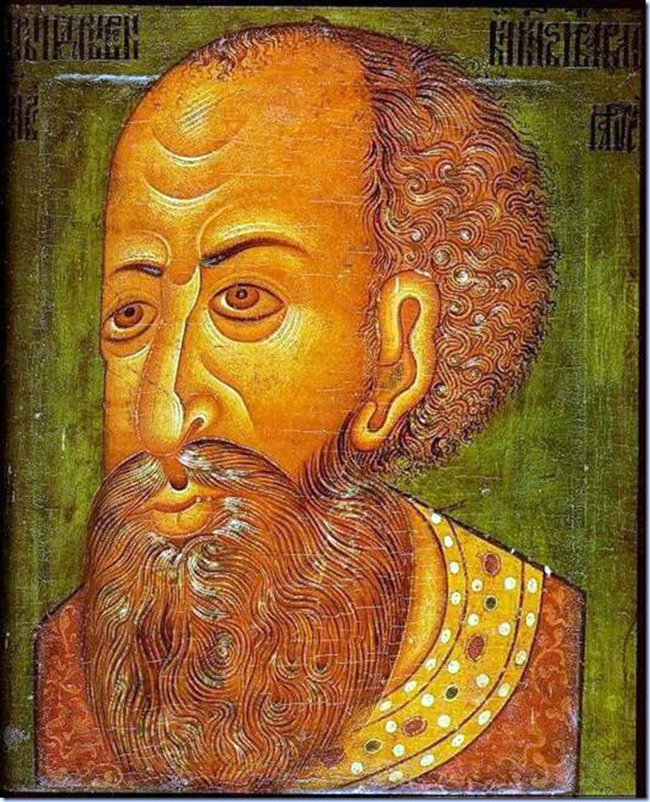
Parsun Ivan the Terrible.
Pointed beard with mustache and brace haircut.
Boyars, like ordinary people, wore long beards and mustaches. However, the fashion for shaved faces periodically appeared in Moscow. So, Prince Vasily Ivanovich shaved off his beard in honor of his second marriage. The boyars followed his example. However, the fashion for shaved faces did not last long.
The beards were of the most varied shapes - a "shovel" beard, a wedge beard, a pointed beard, a round beard, a beard divided into two parts. For example, Tsar Ivan the Terrible wore a small pointed beard with a mustache and a brace haircut.
Fashion for shaved faces will come to Moscow again during the Time of Troubles and with the appearance at the walls of Moscow of the troops of the Commonwealth (the state that then united the present lands of Poland, Lithuania, Belarus and Ukraine). The Commonwealth wanted to put False Dmitry on the Moscow throne (there were several of them) - allegedly the son of the last Moscow tsar from the Rurik dynasty, Ivan the Terrible. These attempts failed, and the Romanov dynasty soon ascended to the Moscow throne.
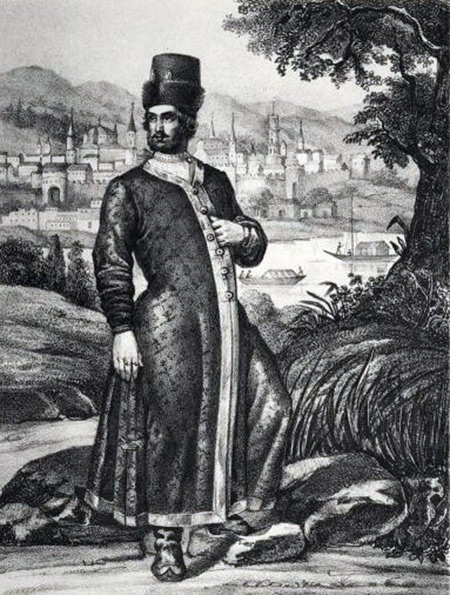
Russian clothing from the 14th to the 18th century, a terlik and a murmol hat.
(The view depicts the city of Astrakhan at the beginning of the 17th century).
Under the first Romanovs, European clothes (or as they are called German, Polish) and hairstyles are increasingly beginning to penetrate Russian lands. Tsar Alexei Mikhailovich (father of Peter I) also wore European outfits in childhood, and, being a tsar, did not particularly interfere with Western influences.
However, in his old age, a year before his death, in 1675 he issued a decree forbidding his subjects to wear Western clothes: “A steward and solicitor and a Moscow nobleman and a tenant ... They did not cut their hair on their heads, they also did not wear dresses, caftans and hats from foreign models, and therefore they were not ordered to wear their own people. And if someone in the future learns to cut their hair and wear a dress from a foreign model, or else such a dress will appear on their people: both from the Great Sovereign will be in disgrace, and from the higher ranks they will be written to the lower ranks. "
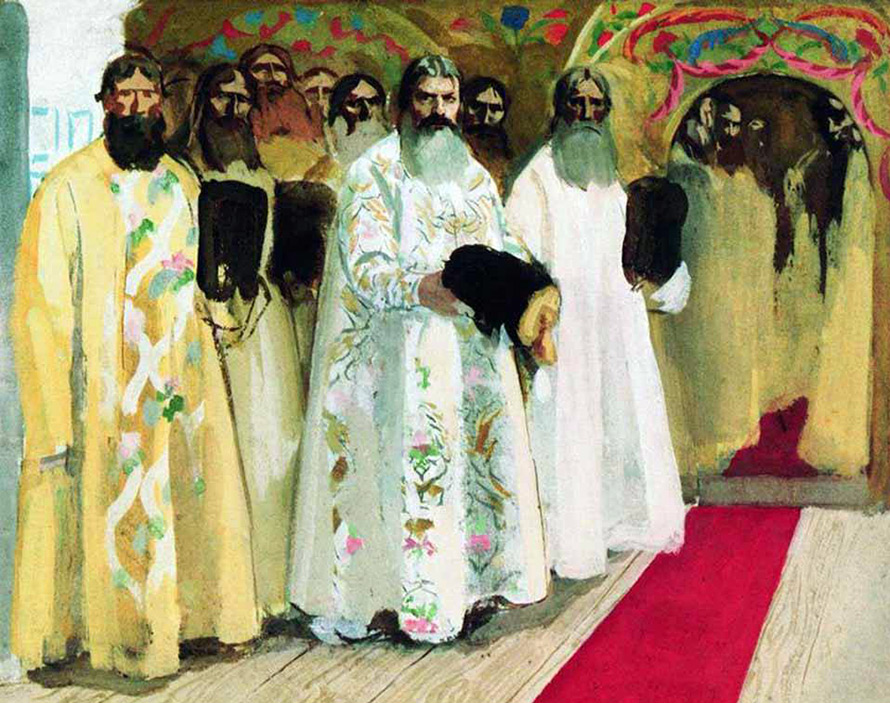
A.P. Ryabushkin. They are awaiting the exit of the king. 1901 year. Sketch.
In the hands of the boyars, throated hats.
Great importance was also attached to hats. Traditional men's headdresses in the Moscow principality were:
1. Cone-shaped felt caps with embroidery and metal decorations.
2. Felt round hats different colors with fur trim.
3. Tafia - a lower headdress worn under large hats. Tafia was a round or quadrangular skullcap. It was made of velvet, embroidered with gold embroidery or beads.
4. Murmol - a kind of cap. Made of fabric, low, embroidered with beads. At the same time, lapels of fox, marten, sable fur came from the face.
5. Gorlat hat - a cap that looks like a trumpet, an obligatory headdress for boyars. This hat was made entirely of fluffy fur.And only the round bottom was made of expensive fabric.
6. Sable hats were worn at the court of Ivan the Terrible.
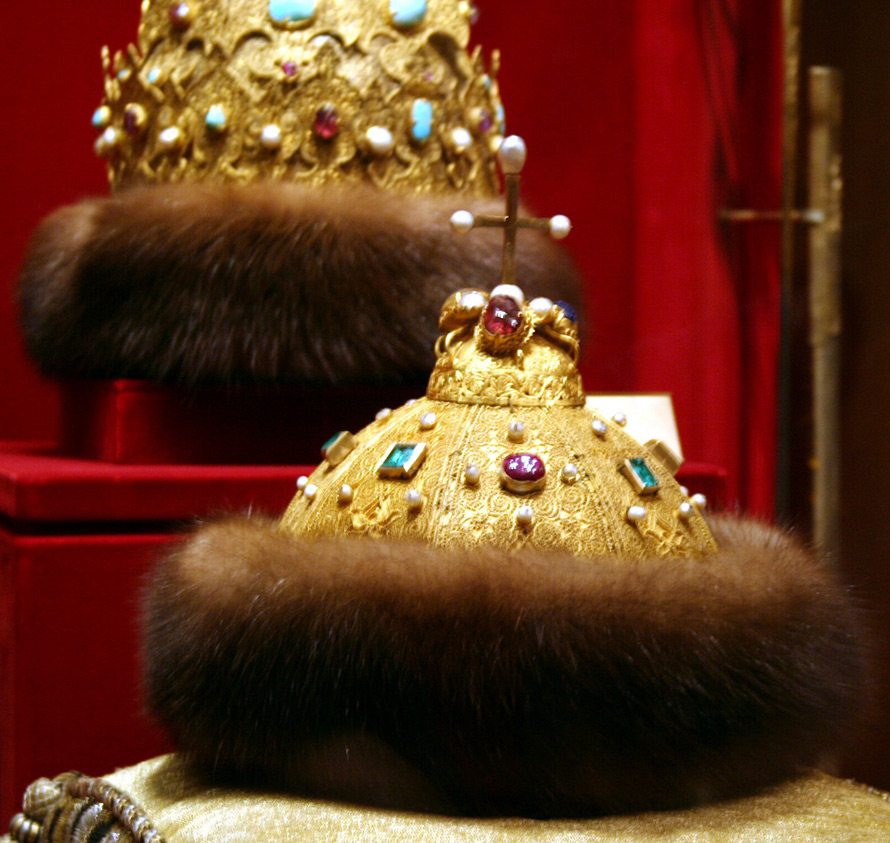
"Cap of Monomakh".
And, of course, when speaking about men's headdresses of Muscovite Russia, one should not forget about the “Monomakh's hat” - a kind of crown, a tsar's headdress. They crowned the kingdom with the "Cap of Monomakh". This headdress was shaped like a cone. Was adorned with precious stones and gold. The bottom is trimmed with valuable sable fur, on the top - a gold cross.
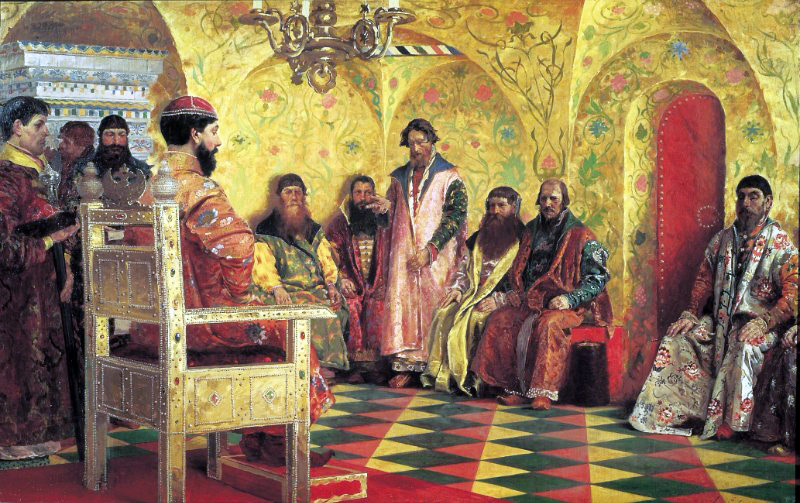
Hairstyles of Russian women and girls
Women's hairstyles did not differ in variety. As in the days of Kievan Rus, women were obliged to hide their hair under headdresses.
The girls wore braids. The braid was considered a symbol of girlish beauty.... During the wedding, the bride's braid, under the sad songs of the bridesmaids and their sobs, was unraveled and intertwined into two braids that fit around the head - a woman's hairstyle. Thus, the bride and her bridesmaids said goodbye to the girl's unmarried life and her girlhood.
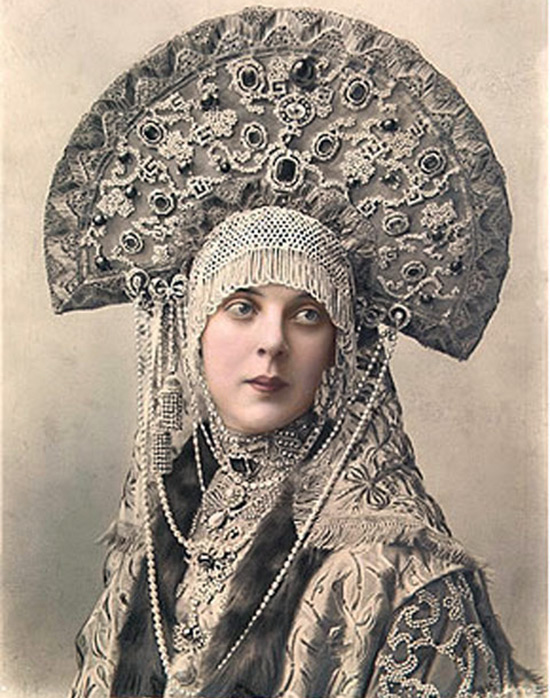
Princess O.K. Orlova at the 1903 costume ball.
The headdress is a kokoshnik.
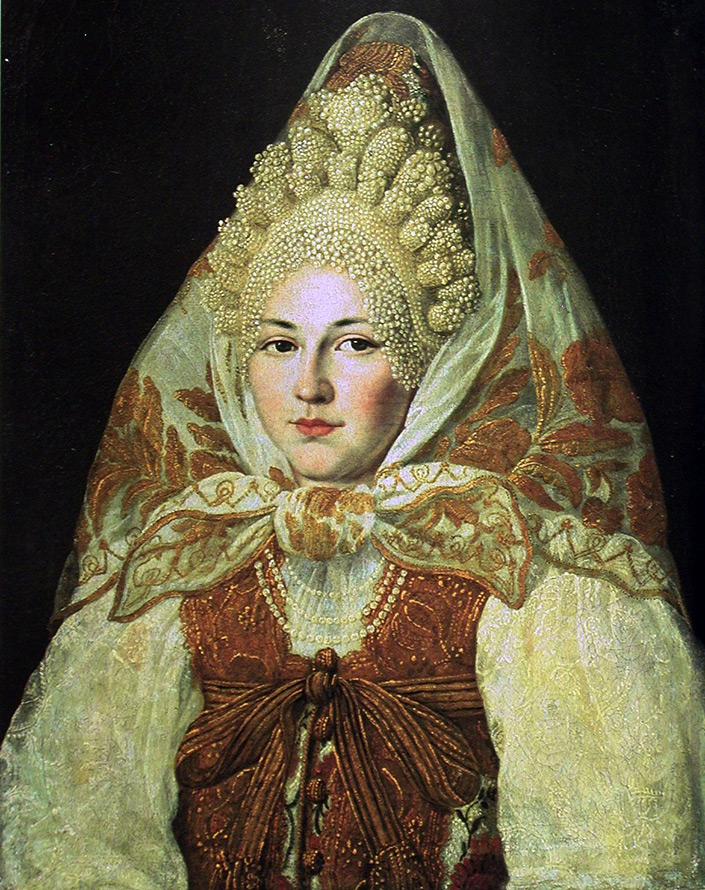
Abram Klyukvin. A woman in a toropetsky pearl headdress and a scarf.
Headdresses of Russian girls and women
Women's hats were varied. Worn kokoshniks - onion-shaped hats. Such headdresses were made of dense fabric - brocade, satin, silk, stretched over a solid base. The edges of the headdress were framed by a fringe. The kokoshniks themselves were painted with various patterns, decorated with pearls.
By the way, in those days, many jewelry was made from river pearls (it was used in embroidery on clothes, headdresses), since it was relatively cheap and of local production. Sea pearls were brought from the East.
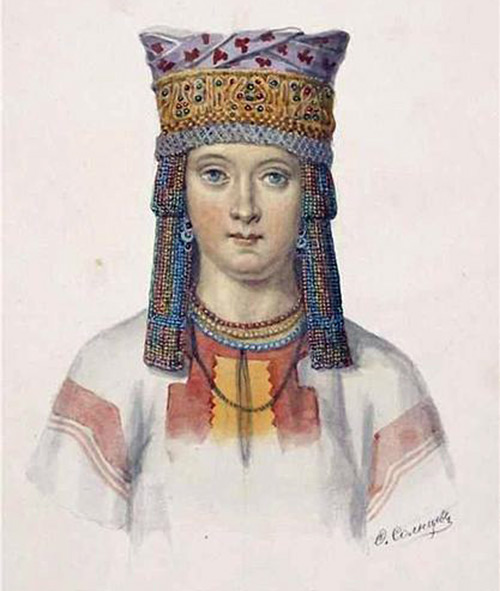
Women's headdress (kika) of the Kaluga province. 1845.
In addition to kokoshniks, they wore a kiku - an elegant headdress. The shape of this headdress depended on the terrain. For example, in the Tula region they wore a "horned" kick.
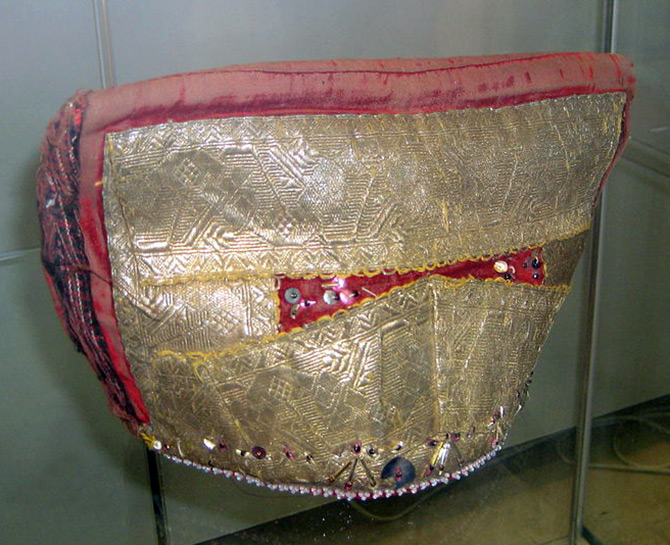
Shovel-shaped kitsch (kick). Ryazan region, XIX century.
There were also warriors - the lower headdresses of married women. In shape, they resembled small hats or bonnets. They were sewn from linen, linen.
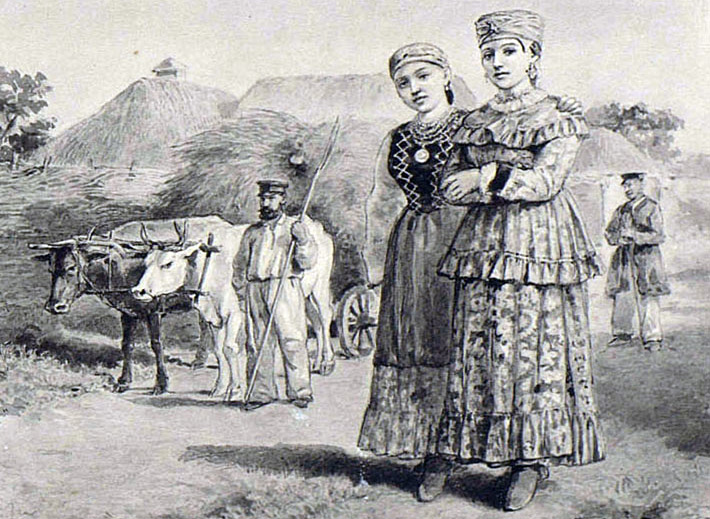
Woman and girl of Biryuchensky district. End of the 19th century.
In warriors.
They wore ubrus - a heavy upper headscarf, in winter - small fur hats, woolen scarves.
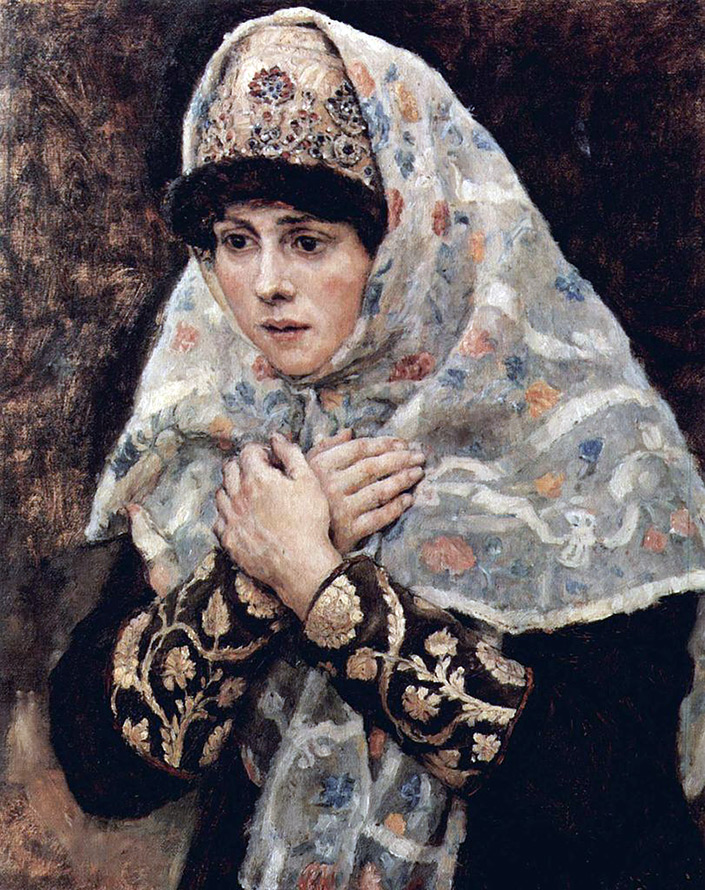
V. Surikov, sketch for the painting "Boyarynya Morozova".
Ubrus.
The queen's headdress was a crown with one or more teeth. The crown was worn on top of a thin scarf. It was embroidered with gold threads, adorned with precious stones, along the edges - with pearls.
Veronica D.
Comments and Reviews
Add a comment
Rating news
Shades of clothing that make women look younger
What shades of hair make women younger: rules and photos
Funny wedding dresses - photos and ideas
12 most expensive down jackets for the winter
How to look 25 at 40: tips from supermodels
Beautiful schoolgirls
Anti-aging haircuts and hairstyles for women
Fashionable skirts for autumn and winter
Fashionable women's trousers for the cold season
Fashionable and stylish sandals for summer 2024
Spring-summer 2024
 Fashionable dresses and tops with thin spaghetti straps
Fashionable dresses and tops with thin spaghetti straps
 Bandana tops: how to wear stylishly and beautifully
Bandana tops: how to wear stylishly and beautifully
 How to put together the perfect men's wardrobe for the summer
How to put together the perfect men's wardrobe for the summer
 Trendy shorts for spring-summer 2024
Trendy shorts for spring-summer 2024
 Fashionable skirts for spring-summer 2024: a guide to online shopping
Fashionable skirts for spring-summer 2024: a guide to online shopping
 The most fashionable dresses spring-summer 2024: styles and colors
The most fashionable dresses spring-summer 2024: styles and colors
 Fashionable total look 2024: image ideas and trends
Fashionable total look 2024: image ideas and trends
